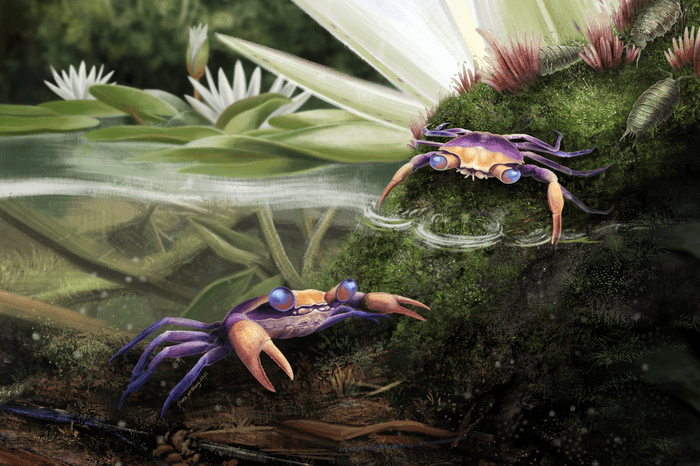
More than 100 million years ago, while dinosaurs still roamed the Earth, a tiny crab wandered out to the shore. Unlucky for it, the crab got stuck in resin and perished. But lucky for us, that resin fossilized into amber, preserving not just the crab’s body parts but also soft tissues like antennas and even its bulgy eyes.
“It’s not missing a single hair on the body, which is remarkable,” said Javier Luque, a postdoctoral researcher in the Department of Organismic and Evolutionary Biology at Harvard University.
The spectacular specimen is, in fact, the most complete crab fossil ever discovered. The ancient crab, which scientists have christened Cretapsara athanata, originated in northern Myanmar. Researchers from the Longyin Amber Museum in China bought the fossil from local miners in 2015 and remained in the museum’s collection somewhat idly until Luque heard about it.

Luque is one of the world’s foremost authorities on crab evolution, so naturally, he was invited to become part of an international collaboration that included researchers from China, Canada, and the United States.
When Luque first laid eyes on the amber fossil, one of his first thoughts was what the heck was a crab doing stuck in fossilized tree resin.
“In a way, it’s like finding a shrimp in amber,” the researcher said. “Talk about wrong place, wrong time.”

Using micro-CT scans, Lida Xing of the China University and colleagues reconstructed a 3D model of the ancient crab, allowing the researchers to study the specimen in minute detail, including the fine hairs the lined its body.

By the looks of these scans, the 100-million-year-old specimen closely resembled modern crabs that scuttle around shores across the world today. Judging from its tiny size, which measures only 5 millimeters across, it was likely a baby crab. Although the oldest-ever crab fossils date back to the Jurassic, more than 200 million years ago, previously discovered crab fossils were incomplete, largely consisting of claw fragments.
The new specimen also predates previous crab-like fossils by 25 to 50 million years and perfectly agrees with molecular reconstructions of the crab tree of life. Such molecular DNA analyses predicted that nonmarine crabs split from their marine ancestors more than 125 million years ago. Thus, this amazing Cretaceous crab bridges the gap between theoretical predictions and the actual fossil record.
Writing in the journal Science Advances, the authors note that the amber fossil shows that crabs made the leap from sea to land much earlier than thought, during the dinosaur era rather than during the age of mammals.
But it’s not clear whether or not Cretapsara athanata was a land lover, judging from its incomplete lungs that weren’t adapted to fully terrestrial life. Instead, the scientists believe the ancient crab likely flourished in freshwater or perhaps brackish water. Some of the crab’s preferred habitats may have been puddles on the forest floor, which explains how this particular specimen may have met its doom.
“They are all over the world, they make good aquarium pets, they’re delicious for those of us who eat them, and they’re celebrated in parades and festivals, and they even have their own constellation,” Luque said. “Crabs, in general, are fascinating, and some are so bizarre-looking — from tiny little pea-shaped crabs to humongous coconut crabs. The diversity of form among crabs is captivating the imagination of the scientific and non-scientific public alike, and right now people are excited to learn more about such a fascinating group that are not dinosaurs. This is a big moment for crabs.”
Update (03 November, 2021): Fixed a dishonorable but funny typo. Thank you all in the comments :)


